
Yellow-legged frogs killed by chytrid fungus in Sixty Lakes Basin area of the Sierra Nevada, California, USA
Photo credit: Joel Sartore/Natural History Museum.
I've written several times both in this blog and in my popular, illustrated book, The Malevolent Designer: Why Nature's God is not Good, about the deadly fungus, Batrachochytrium dendrobatidis, that is decimating the world population of amphibians, especially frogs.
As a piece of intelligent [sic] design, taking a previously harmless soil fungus and modifying to kill frogs, is about as good an example of the sheer nasty malevolence of any designer that could do such a thing as you could wish for.
Yet Creationists continue to insist only their favourite designer god could do such a thing, because evolution isn't capable of doing it. For some unexplained reason, chemistry and physics need magic to make them work.
But now the news from Australia, is that frogs may be staging something of a fight back by developing resistance to it - again something that Creationists will insist must have been done by the same malevolent designer that designed the fungus to kill frogs in the first place.
Or that's to sort of bizarre belief system Creationists dupes have been fooled into.
As always though, the facts of biological science offer a more rational explanation. Here for example is a report by Matthijs Hollanders and David Newell of Southern Cross University, Australia, which gives evidence of this fightback. It is reprinted from The Conversation, reformatted for stylistic consistence, under a Creative Commons licence. The original article can be read here:

A deadly disease has driven 7 Australian frogs to extinction – but this endangered frog is fighting back
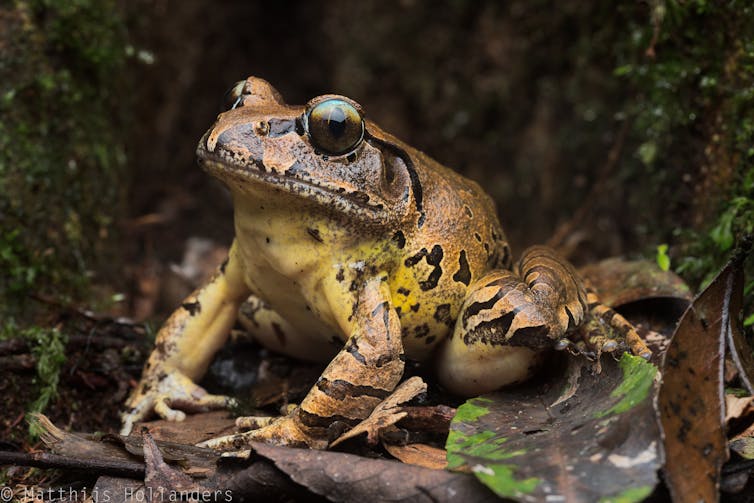
Credit: Matthijs Hollanders, Author provided
Matthijs Hollanders, Southern Cross University and David Newell, Southern Cross University
Environmental scientists see flora, fauna and phenomena the rest of us rarely do. In this series, we’ve invited them to share their unique photos from the field.
Frogs are among the world’s most imperilled animals, and much of the blame lies with a deadly frog disease called the amphibian chytrid fungus. The chytrid fungus has caused populations of over 500 frog species worldwide to plummet, and rendered seven Australian frogs extinct.
Our new research, however, has identified an endangered frog species that seems to have developed a natural resistance to the disease, after having previously succumbed to it in prior decades: Fleay’s barred frog (Mixophyes fleayi).
Fleay’s barred frog grows up to 9 centimetres long, and lives near gravelly streams in the rainforests of northern New South Wales and southeast Queensland. It is not the only frog species largely resistant to the disease, with a precious few others also known to survive it, such as common mistfrogs and cascade treefrogs.
We speculate that other frog species worldwide may be on a similar trajectory. There is currently no cure for the chytrid fungus, but understanding how Fleay’s barred frog and others are fighting back may prove instrumental in helping us bring more species back from the brink.
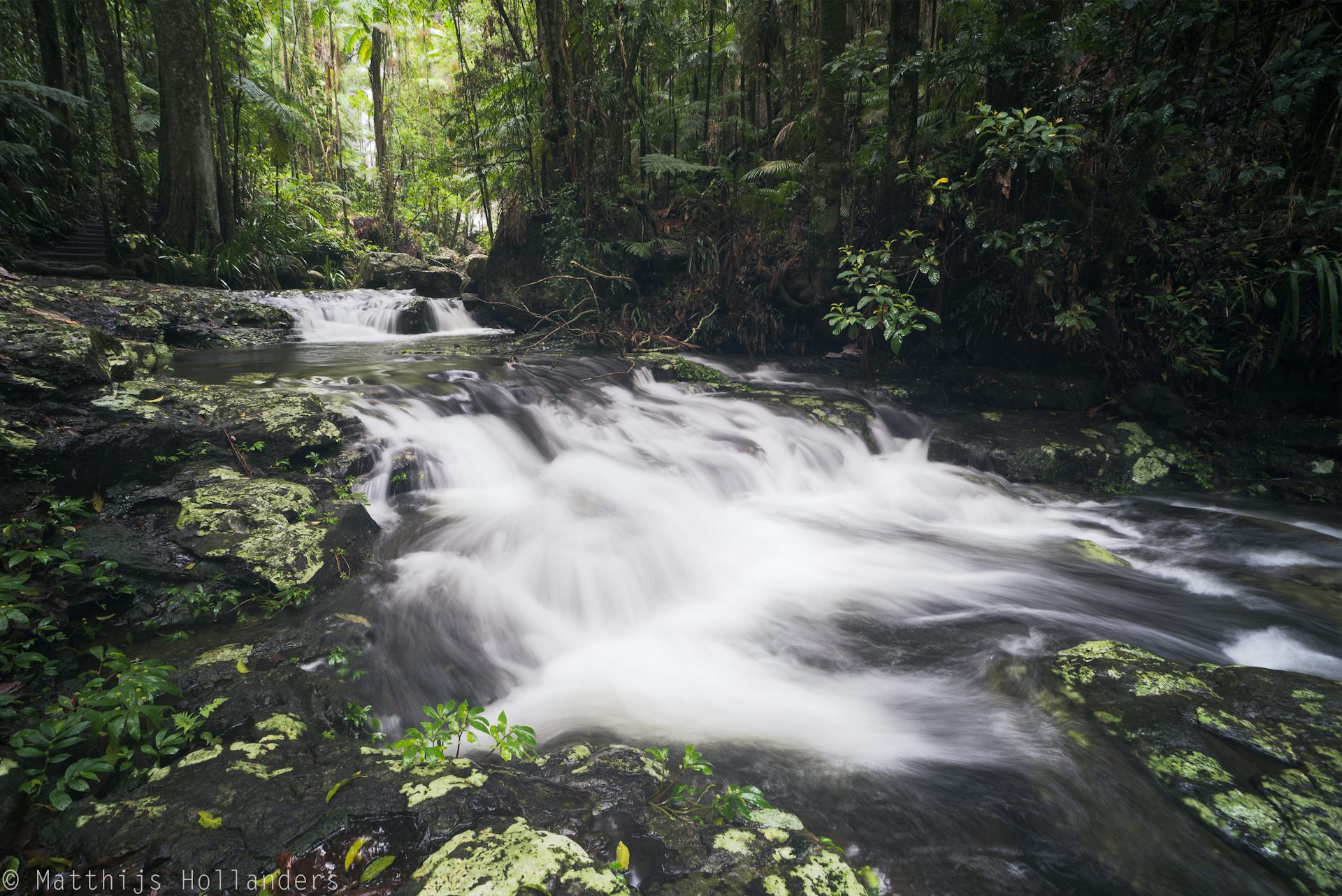
A stream in a northern NSW rainforest, a typical habitat of the Fleay’s barred frog.
Matthijs Hollanders, Author provided
The amphibian chytrid fungus (Batrachochytrium dendrobatidis) causes a skin disease and breached Australian borders in the 1970s. Since then, the disease has caused populations of dozens of species to severely decline, and has driven seven to extinction, including the gastric brooding frogs and southern day frogs.
It wasn’t until 1998 that two independent research teams discovered the fungal pathogen was to blame. This unfortunately meant much of the damage was already done prior to its discovery.
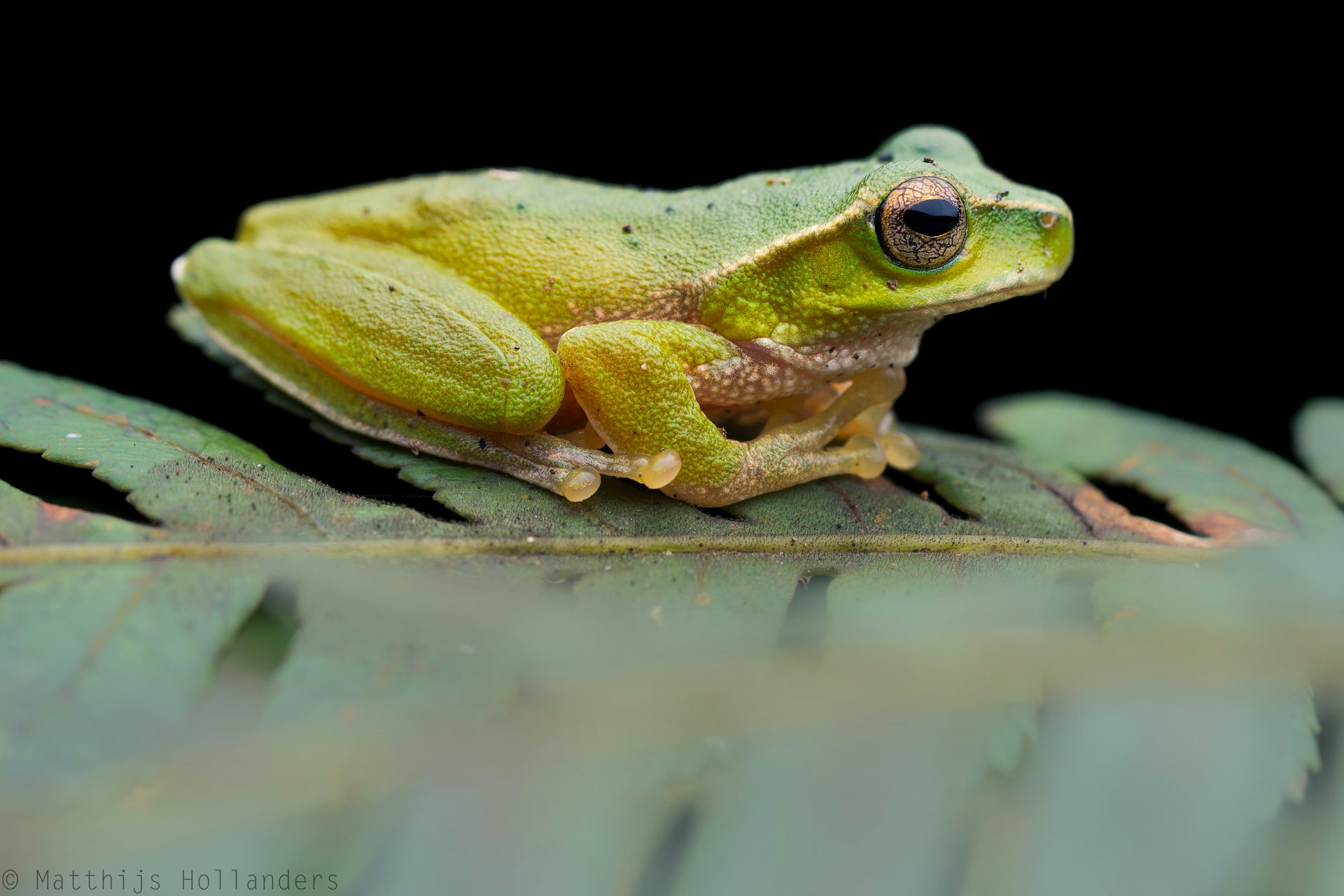
Cascade tree frog (Litoria pearsoniana), another species that initially declined due to chytrid fungus but has since largely recovered.
Credit: Matthijs Hollanders, Author provided
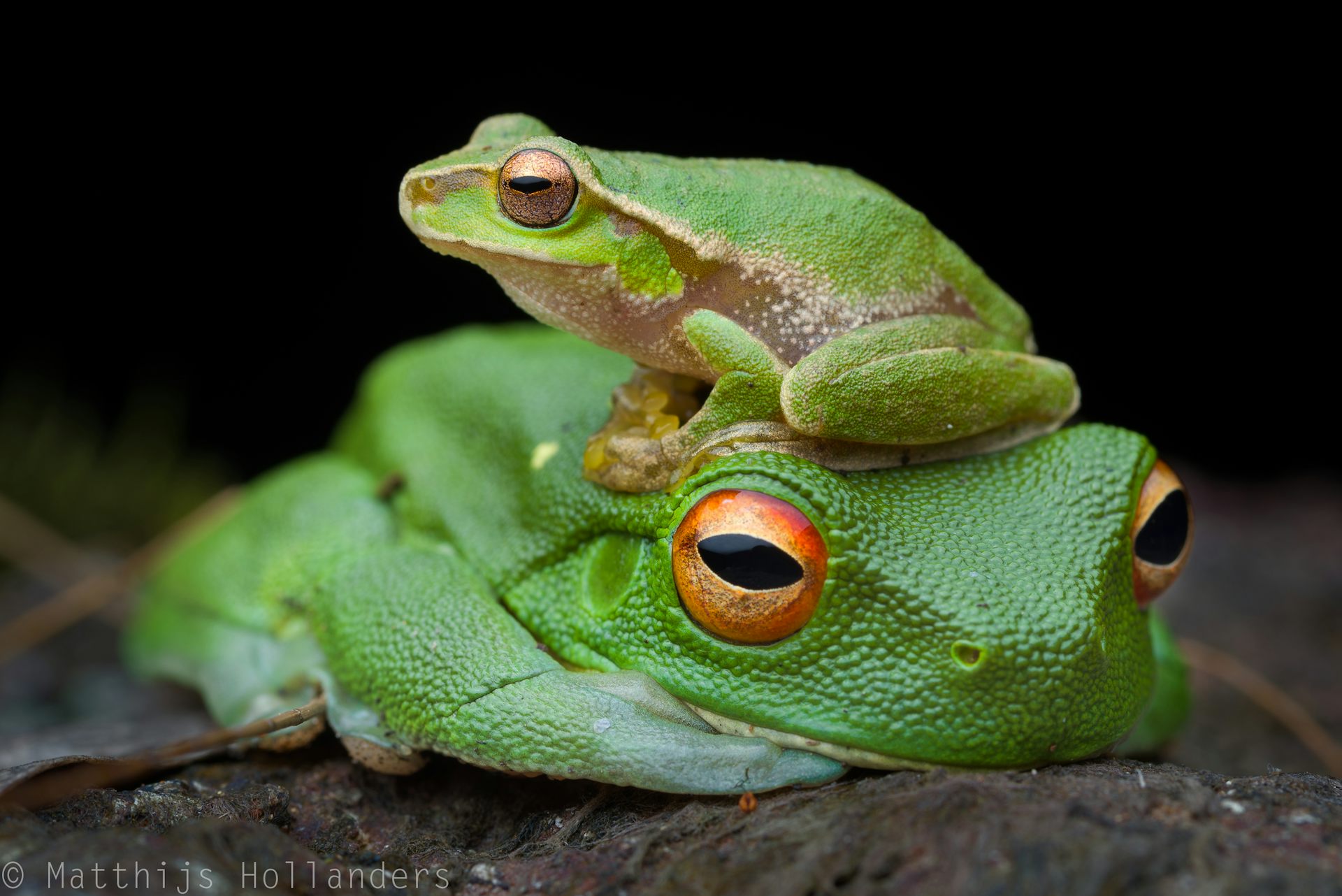
This photo shows a cascade treefrog on top of a red-eyed treefrog (Litoria chloris) and shows a potential mode of disease transmission.
Credit: Matthijs Hollanders, Author provided
But our research suggests the Fleay’s barred frog is bouncing back. Over four years, we conducted intensive field research at several rainforest streams in northern New South Wales to investigate the prevalence and intensity of infection within Fleay’s barred frog populations.
We found while some frogs with high-level infections died, most seemed capable of clearing their infections.
Frogs are fighting back
Surveys in the late 1990s detected up to 15 Fleay’s barred frogs at the sites we studied. But during our investigations, we regularly found close to 100. Moreover, other researchers have noted that these frogs are relatively common across many rainforest streams, suggesting populations of Fleay’s barred frog have recovered.
We implanted 686 frogs with microchips and tested frogs for the chytrid fungus via a skin swab every time they were captured. This allowed us to follow these frogs over four years to learn about the population’s death rates and infection dynamics.

The Fleay’s barred frog was once common across the Border Ranges.
Credit: Matthijs Hollanders, Author provided
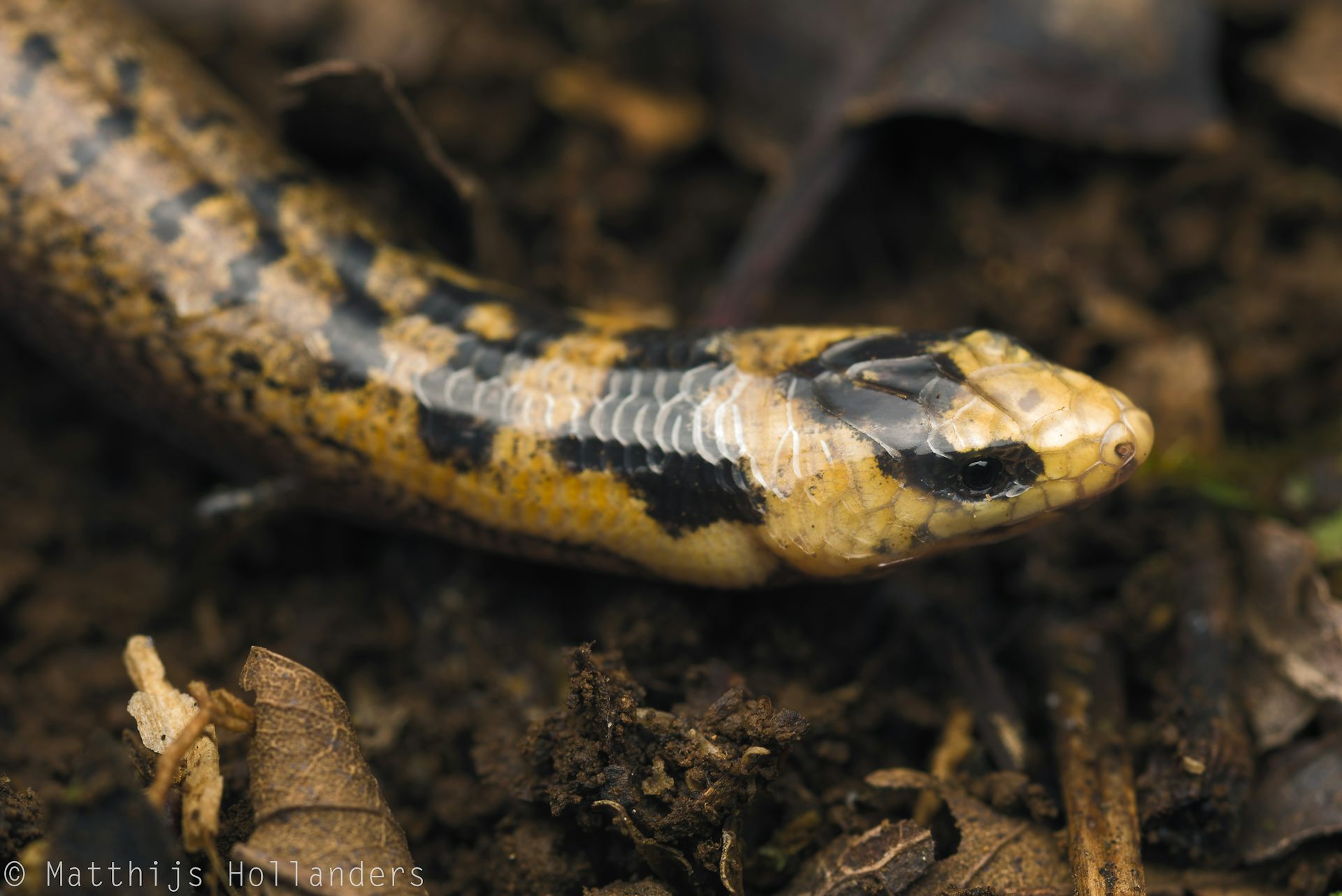
Three-toed snake-tooth skink (Coeranoscincus reticulatus), another endangered species living in the Gondwana rainforests.
Credit: Matthijs Hollanders, Author provided
We confirmed the prevalence of the chytrid fungus and the intensity of its infection was influenced by environmental conditions. Specifically, it was greatest with lower temperatures and higher rainfall.
This may help explain why we have witnessed mass death events in Australian frogs during recent wet winters along the eastern seaboard.

Fleay’s barred frog is also called the silverblue-eyed barred frog.
Credit: Matthijs Hollanders, Author provided
We found infections were poor predictors of death. Only the highest pathogen loads were associated with an increase in rate of deaths, but frogs were very rarely infected with such high burdens.
Instead, frogs were much more likely to clear their infections than to gain them, ultimately leading to a low infection prevalence in the populations. On average, just one in five frogs were likely to be infected at any given time.
For those infected, pathogen loads were among the lowest we observed in rainforest frog communities. Some of the other species, such as the cascade treefrog, stony creek frog and giant barred frog, carried loads that were 30% higher.
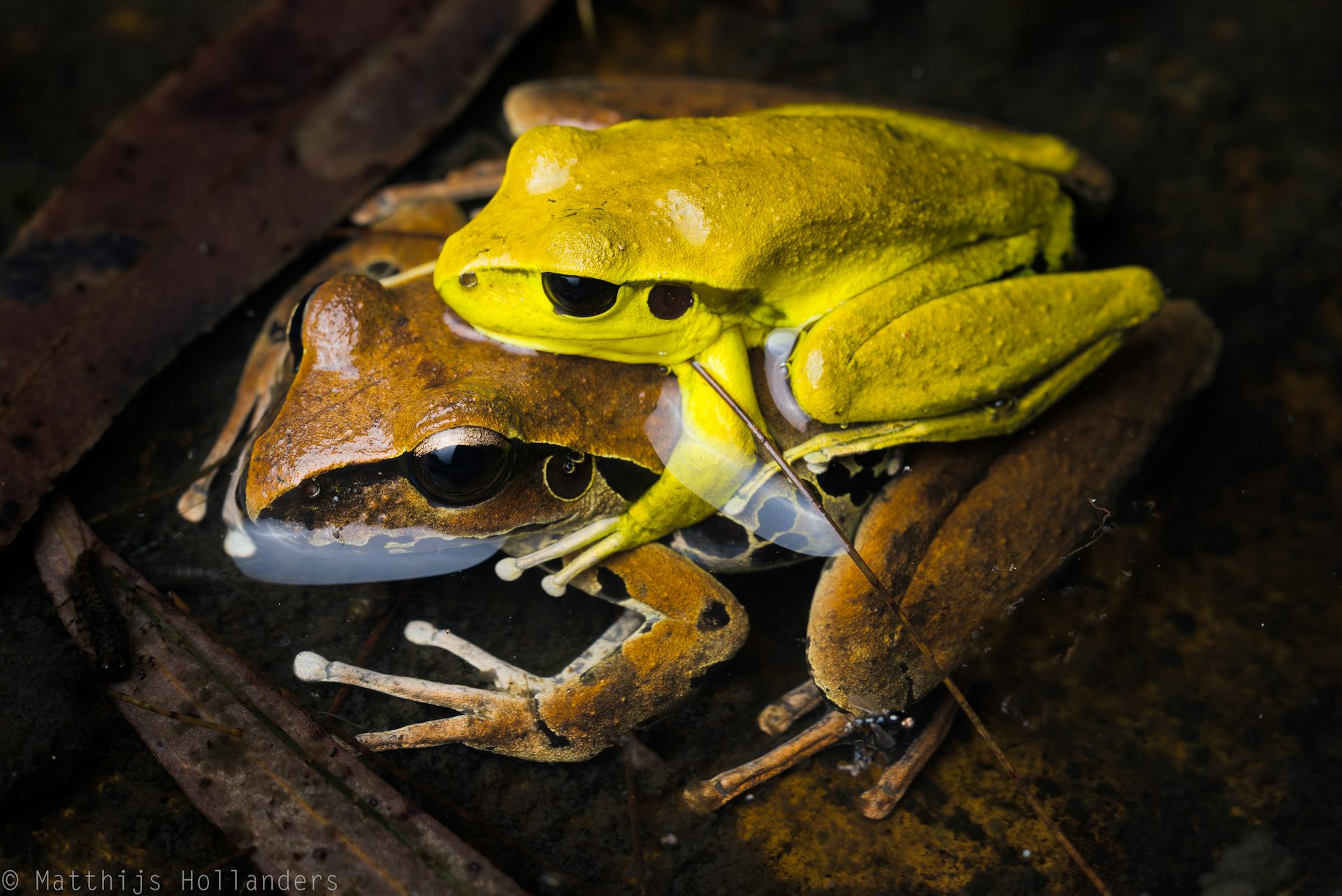
Male stony creek frogs (Litoria wilcoxii) turn bright yellow in the breeding season.
Credit: Matthijs Hollanders, Author provided
So why can the frogs now deal with a disease that decimated populations just a few decades ago? This question is unfortunately still hard to answer.
Given their low pathogen loads and high rates of clearing them, we believe Fleay’s barred frogs have developed natural resistance against the chytrid fungus, meaning their immune systems are actively combating infections. We further speculate that other species worldwide may be doing the same.
A promising avenue of conservation research is to use the genetic information of some species to help others survive threats in the wild, such as disease or climate change. Fleay’s barred frogs may carry just the genes we’re looking for.
We now hope to use these resistant frogs for a reintroduction program in nearby Wollumbin (Mount Warning) in NSW, where the species disappeared from in the 1990s. This approach may help the ecosystem of this iconic World Heritage site to thrive.
AbstractThe very fact of evolution by natural selection almost makes the eventual emergence of resistance to this fungus in some species of frog inevitable as the predictable result of evolutionary arms races, so the above article will come as no surprise to anyone with an even basic understanding of evolution and how it works.
Novel infectious diseases, particularly those caused by fungal pathogens, pose considerable risks to global biodiversity. The amphibian chytrid fungus (Batrachochytrium dendrobatidis, Bd) has demonstrated the scale of the threat, having caused the greatest recorded loss of vertebrate biodiversity attributable to a pathogen. Despite catastrophic declines on several continents, many affected species have experienced population recoveries after epidemics. However, the potential ongoing threat of endemic Bd in these recovered or recovering populations is still poorly understood. We investigated the threat of endemic Bd to frog populations that recovered after initial precipitous declines, focusing on the endangered rainforest frog Mixophyes fleayi. We conducted extensive field surveys over four years at three independent sites in eastern Australia. First, we compared Bd infection prevalence and infection intensities within frog communities to reveal species-specific infection patterns. Then, we analyzed mark-recapture data of M. fleayi to estimate the impact of Bd infection intensity on apparent mortality rates and Bd infection dynamics. We found that M. fleayi had lower infection intensities than sympatric frogs across the three sites, and cleared infections at higher rates than they gained infections throughout the study period. By incorporating time-varying individual infection intensities, we show that healthy M. fleayi populations persist despite increased apparent mortality associated with infrequent high Bd loads. Infection dynamics were influenced by environmental conditions, with Bd prevalence, infection intensity, and rates of gaining infection associated with lower temperatures and increased rainfall. However, mortality remained constant year-round despite these fluctuations in Bd infections, suggesting major mortality events did not occur over the study period. Together, our results demonstrate that while Bd is still a potential threat to recovered populations of M. fleayi, high rates of clearing infections and generally low average infection loads likely minimize mortality caused by Bd. Our results are consistent with pathogen resistance contributing to the coexistence of M. fleayi with endemic Bd. We emphasize the importance of incorporating infection intensity into disease models rather than infection status alone. Similar population and infection dynamics likely exist within other recovered amphibian-Bd systems around the globe, promising longer-term persistence in the face of endemic chytridiomycosis.
Hollanders, M., Grogan, L.F., Nock, C.J., McCallum, H.I. and Newell, D.A. (2022),
Recovered frog populations coexist with endemic Batrachochytrium dendrobatidis despite load-dependent mortality.
Ecological Applications. Accepted Author Manuscript e2724. https://doi.org/10.1002/eap.2724
Open access. © 2022 Ecological Society of America. Published by John Wiley & Sons, Inc.
For Creationists, however, the fact that their beloved designer seems to have lost the plot completely and is now redesigning frogs to resist the fungus it modified to kill them with, would be a major embarrassment if they understood the simple logic of their own beliefs rather than just memorising the cliches to squawk like parrots in debate groups when they get stuck.



No comments :
Post a Comment
Obscene, threatening or obnoxious messages, preaching, abuse and spam will be removed, as will anything by known Internet trolls and stalkers, by known sock-puppet accounts and anything not connected with the post,
A claim made without evidence can be dismissed without evidence. Remember: your opinion is not an established fact unless corroborated.